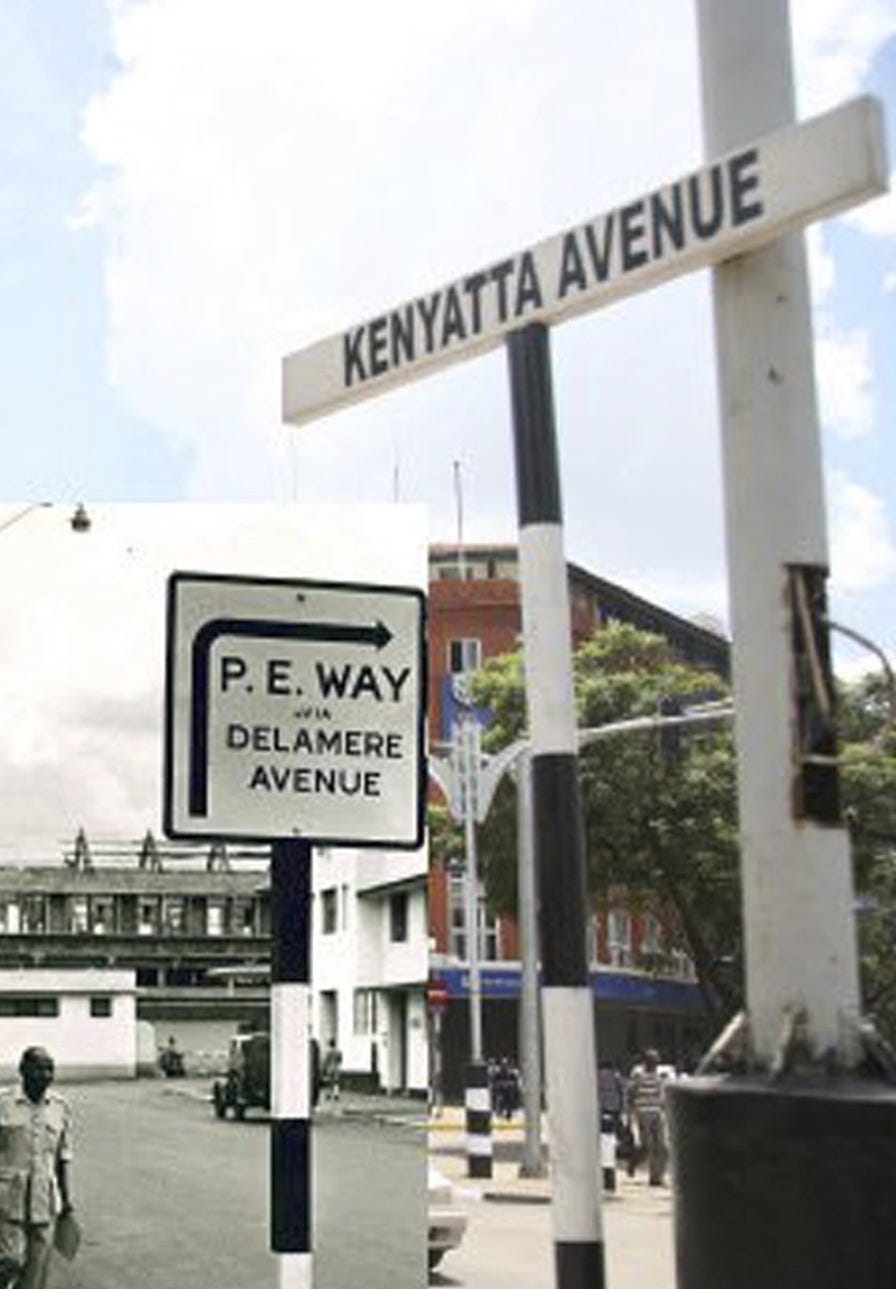‘Naming is power’ wrote Yi Fu Tuan, meaning that one of the most important ways that power is exercised over places is through choosing the names we give to places.
The example of Nairobi, the capital of Kenya in East Africa shows this clearly. Nairobi was established as a formal settlement in around 1901 as a staging post for the railway between Mombasa and Uganda. The names given to the first streets in the town’s centre reflect British power and idea of the type of place Nairobi was.
Until Independence in 1963 the CBD had the following streets:
Victoria Street,
Coronation Avenue,
Delamere Avenue (named for pioneering colonist Lord Delamere) and
Princess Elizabeth Way.

These daily reminders to pedestrians and motorists that those with power marked this as a place of Britishness and royalty. Nairobi’s European population in 1963 was around 10,000 - out of a total population of 360,000.
When the Kenyatta Government came to power in 1963 they moved quickly to rename places throughout the country. They asserted Kenyan national identity in place. Those streets listed above are now:
Tom Mboya Street ( named for one of Kenya’s founding fathers who negotiated Independence from Britain),
Harambee Avenue (A Swahili word meaning ‘all pull together’ that is the official motto of Kenya),
Kenyatta Avenue, and
Waiyaki Way (Waiyaki Wa Hinga was a Maasai local leader in the late nineteenth century)
Naming is power, and the naming of places is never neutral.
(More here)



